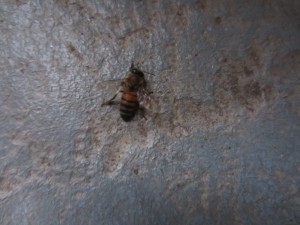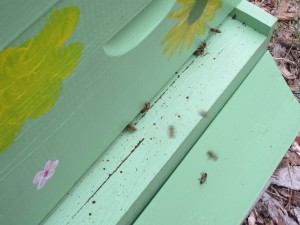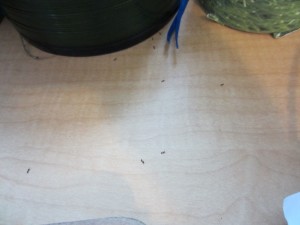This morning, I was walking down the stairs in my dorm when I noticed a lounging honeybee. This bee was hanging out on the concrete step, not much minding as I observed and took pictures.
I went to the beehive on campus about an hour after spotting the bee. It was the coolest temperature I’ve been to the hive in (about 75°F), and the bees weren’t as active as normal, but there was still activity. As I approached the hive, the bees started moving around more and seemed to want me away, but they weren’t aggressive at all, and I was able to get very close to them and the hive with no injuries.
After looking at the hive, I rode my bike bake to my dorm, stopping next to the spot I originally found the honeybee. She was of course long gone by this point, but my bike computer read .94 miles, and that’s even with my winding around buildings. According to this, the bee I found was well within the range of the Rice beehive, though it’s probably more likely she came from one of the natural hives on campus or one of the closer neighborhood hives. Either way, the lone bee and the hive represent pollinators that play a large role in our lives as Rice students.
I found the first bee near Martel, a college that is home to a community garden. This garden is the home to some tomato plants, including a couple of “volunteer” plants that showed up this year. Tomatoes, like many Solanaceae, are fertilized via buzz pollination, a method that requires the vibration of the flower for the pollinator to obtain the pollen. Bees are typically the pollinators in question for this method, as it the case for tomatoes (read more about it here). The eggplants and potatoes sometimes grown in the gardens also require buzz pollination. This video shows buzz pollination very well.
Honeybees are not native to the United States, though other varieties of bees are, but they have nonetheless become important in crop pollination, food production, and even medicinal and cosmetic ingredients in the United States. This article states that honeybees are essential for agriculture in the United States, and it is hard to ignore the importance of honey when most Americans consume or use it every day. The little bee I spotted on the stair is part of an extremely important species, not just for us, but for the world.






